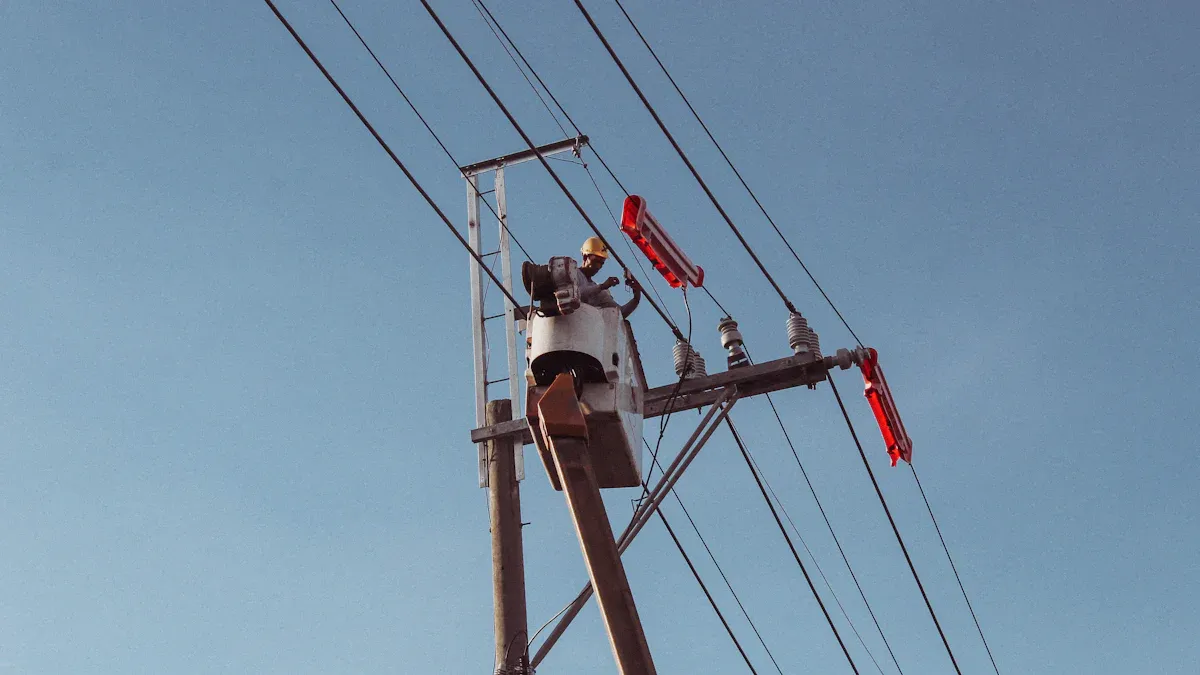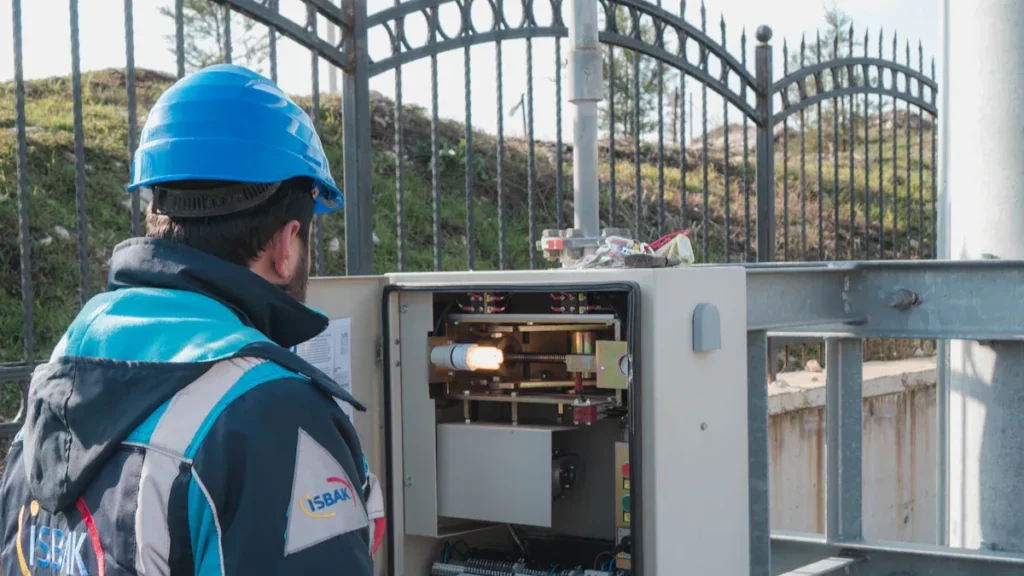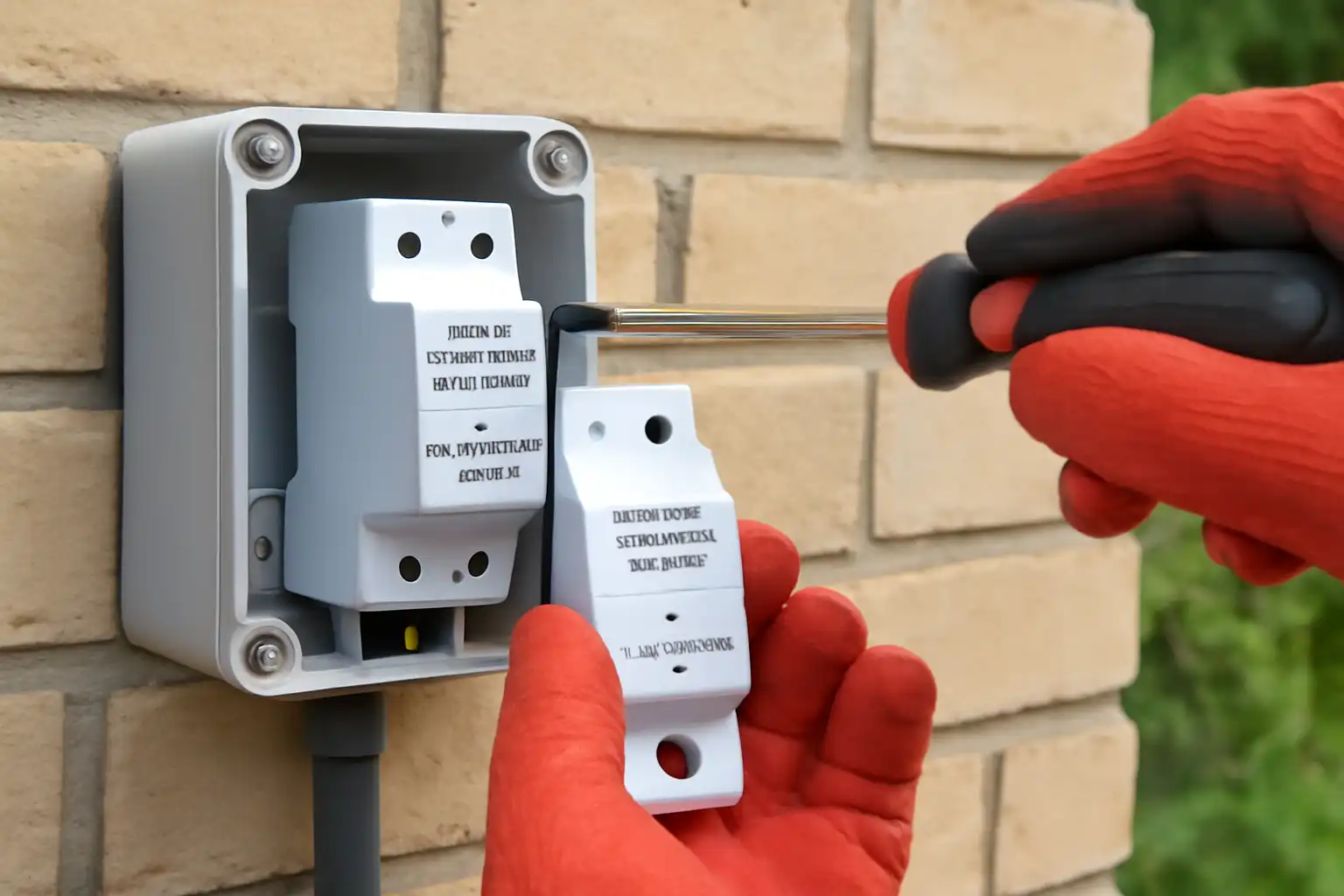Surge protectors are installed outdoors to protect devices from voltage spikes and bad weather. Outdoor equipment, like pool pumps or garden lights, has special risks, especially during storms. For example, some places in Cameroon experience 40 to 90 thunderstorms each year, which increases the likelihood of electrical surges. Lightning and power changes during storms can harm your devices if they aren’t protected.
It’s not safe to use indoor surge protectors outside. Outdoor surge protectors are specifically designed to handle wet or humid weather. These protectors keep your outdoor devices safe and functioning, even in tough conditions.
Key Takeaways
-
Use surge protectors made for outdoor use to guard devices. Indoor ones can’t handle weather conditions like rain or heat.
-
Check for weatherproof ratings like IPX3 or IPX4. These show the protector can handle water and moisture.
-
Inspect outdoor surge protectors often. Look for damage and replace them every 3–5 years to stay safe.
-
Pick surge protectors with safety labels like UL or ETL. These prove the product is safe for outdoor use.
-
Don’t overload surge protectors. Plugging in too many things can cause overheating or harm.
Types of Surge Protectors for Outdoor Installations

Weatherproof Surge Protectors
Weatherproof surge protectors are made to handle tough outdoor weather. They have cases that block water, dust, and sunlight, keeping them working well. When buying one, check for certifications that prove they are strong and reliable.
|
Requirement Type |
Description |
|---|---|
|
Water Resistance |
Cases must meet water resistance rules for outdoor use. |
|
UV Exposure |
Cases must handle sunlight to last in outdoor weather. |
|
Weather-proof Receptacle |
Outlets need a weather-proof cover with a plug cap. |
These features help protect outdoor lights, fountains, and other devices from power surges caused by storms or power changes.
Outdoor-Rated Power Strips with Surge Protection
Outdoor-rated power strips are safe and easy to use. They have built-in surge protection to guard many devices at once. Unlike indoor strips, outdoor ones resist water and dirt. They also have covers for outlets to protect them from bad weather.
You can use these strips for things like holiday lights, patio heaters, or garden tools. They are small, simple to set up, and keep your devices safe from sudden power surges. Always check for safety labels to make sure they are good for outdoor use.
Whole-House Surge Protectors for Outdoor Use
Whole-house surge protectors guard your entire home’s electrical system, including outdoor devices. These protectors are installed at the main panel and stop power surges from damaging your equipment. They work well in areas with lots of storms or power issues.
Whole-house surge protectors are a smart choice for long-term safety. They are great for protecting expensive items like pool pumps, outdoor air conditioners, and security systems.
Key Features of Surge Protectors Installed Outdoors
Waterproof and Weather-Resistant Design
Outdoor surge protectors must handle rain, humidity, and bad weather. Waterproof designs keep them safe and working well. Look for devices with IPX3 or IPX4 ratings. These ratings mean the device resists water sprays or splashes. Manufacturers test them to ensure they work during storms or heavy rain.
Weatherproof surge protectors stop voltage surges from storms and prevent water damage. Water damage can cause electrical problems or hazards. Always check the label for weatherproof ratings before buying one.
Durable Materials for Outdoor Conditions
Outdoor surge protectors need strong materials to handle tough weather. They must resist extreme heat, cold, sunlight, and wear. Impact-resistant plastics or corrosion-proof metals make them last longer. These materials protect the inside parts from breaking or wearing out.
For example, durable surge protectors keep pool pumps or garden lights safe in bad weather. Strong materials mean fewer replacements, saving you money over time.
Safety Certifications for Outdoor Use
Safety labels are important when picking outdoor surge protectors. Certifications like UL or ETL show the device meets safety rules. These groups test products to ensure they work well and are safe outside.
Certified surge protectors guard your devices from power surges and lower fire risks. They also give you confidence that your equipment is protected. Always choose surge protectors with safety certifications for outdoor use.
Installation Tips for Outdoor Surge Protection
Picking a Safe Spot
Choose a safe spot for outdoor surge protectors. Keep them away from direct rain, snow, or strong sunlight. A covered patio, shaded wall, or under an overhang works well. Avoid low areas where water might collect during heavy rain.
Install surge protectors close to where power enters your home. This shortens the path for voltage surges, lowering the chance of damage. For example, placing a whole-house surge protector near the main power panel protects indoor and outdoor devices better.
Proper Mounting and Covers
Mount surge protectors securely to keep them steady. Follow the manufacturer’s instructions for proper installation. Loose protectors can fall or fail during storms or strong winds.
Use weatherproof covers to protect surge protectors from water, dirt, and debris. These covers should seal tightly to block moisture. Make sure wiring and grounding are done correctly. A grounded surge protector works better during lightning or power surges.
Key tips for mounting and covers:
-
Place surge protectors near equipment or the main power panel.
-
Use outdoor-rated covers to shield them from weather.
-
Check that all connections are tight and grounded properly.
Extra Weatherproofing Steps
Even outdoor surge protectors can use extra weatherproofing. Apply silicone sealant around enclosure edges to stop water leaks. For power strips, use outlet covers or weatherproof boxes to protect plugs.
If your area floods or has frequent storms, raise surge protectors above ground. This keeps them safe from water damage. Check them often for cracks or rust and replace damaged ones.
These steps help your outdoor surge protectors last longer and work well, even in bad weather.
Common Mistakes in Outdoor Surge Protector Installations
Using Indoor Surge Protectors Outdoors
Indoor surge protectors should not be used outside. They lack waterproof and weather-resistant features. Rain, humidity, and heat can damage them. This may cause them to stop working or create safety problems.
Outdoor surge protectors are made for tough weather. They have strong cases and safety labels for outdoor use. Always check the label to confirm it’s safe for outdoor setups. Using the wrong surge protector can harm your devices and increase accident risks.
Skipping Regular Maintenance and Inspections
Skipping maintenance can make surge protectors less effective. Rain, dust, and temperature changes wear them down over time. Regular checks help find problems early.
Steps to maintain outdoor surge protectors:
-
Visual Inspection: Check for cracks, rust, or damaged wires.
-
Test the Grounding: Use a tester to check grounding.
-
Test the Surge Protection: Test performance with a surge generator.
-
Replace Old Surge Protectors: Change them every 3–5 years.
-
Use High-Quality Surge Protectors: Pick ones with high joule ratings.
-
Consider Whole-House Surge Protection: Install these for full safety.
These steps help your surge protectors last longer and work better.
Overloading the Surge Protector
Plugging in too many devices can overload a surge protector. This may cause overheating or permanent damage.
Outdoor surge protectors face extra challenges from bad weather. Partial discharges can weaken their parts over time. Always check the surge protector’s load limit. Match it to your device’s power needs. Spread out the load and avoid plugging in high-power items.
Using surge protectors properly keeps your outdoor devices safe and lowers electrical risks.
Outdoor surge protectors help keep your devices safe from bad weather and power surges. They are built to handle tough conditions with strong, weatherproof designs. These protectors are safer and last longer than ones not made for outdoor use.
|
Feature |
Outdoor-Rated Surge Protectors |
Non-Rated Alternatives |
|---|---|---|
|
Weather Resistance |
Yes |
No |
|
Advanced Monitoring |
Yes |
No |
|
Handling Power Conditions |
Yes |
Limited |
|
Protection Against Lightning |
Yes |
Limited |
Pick outdoor-rated surge protectors with features like IP67 waterproofing and strong protection circuits. They react fast to power changes and work well in heavy rain. Install them correctly and check them often to keep them working. Avoiding mistakes helps protect your outdoor devices for a long time.
FAQ
What makes indoor and outdoor surge protectors different?
Indoor surge protectors can’t handle outdoor weather. Outdoor surge protectors are waterproof and resist rain, heat, and dirt. Always check the label to ensure they work outside.
How can you tell if a surge protector is safe for outdoors?
Look for certifications like UL or ETL. Check for weatherproof ratings like IPX3 or higher. These labels show the surge protector can handle outdoor conditions and protect devices well.
Tip: Always read the product details for “outdoor-rated” features before buying.
Can outdoor surge protectors stop lightning damage?
Outdoor surge protectors lower damage from power surges caused by lightning. They can’t fully stop harm from direct lightning strikes. For better safety, install a whole-house surge protector.
How often should outdoor surge protectors be replaced?
Replace outdoor surge protectors every 3–5 years. Frequent storms or surges may wear them out faster. Regular checks help you know when to replace them.
Is it okay to use extension cords with outdoor surge protectors?
Yes, but only use outdoor-rated extension cords. Indoor cords outside can cause electrical problems. Make sure both the surge protector and cord are weatherproof and grounded.
Note: Don’t overload the surge protector when using extension cords.
The following information may be of interest to you
How to Replace a Surge Protector Safely and Efficiently
What is the Ideal Installation Height for a Distribution Box
How to Test Surge Protection Devices for Optimal Performance
Is the location of installing surge protectors important?




